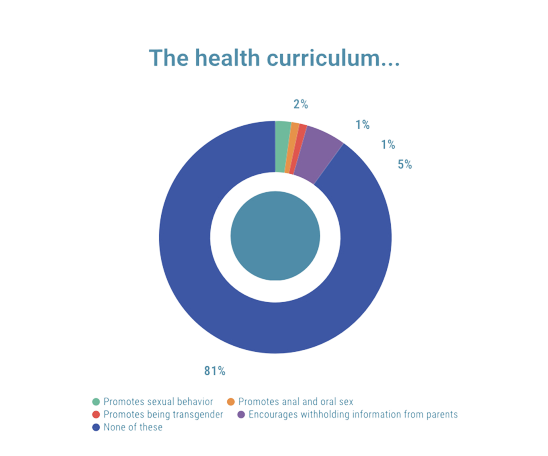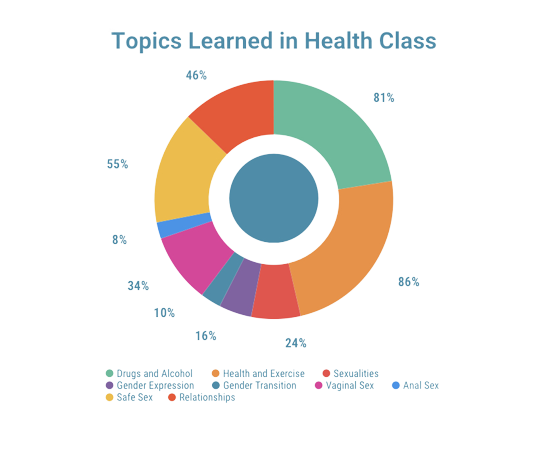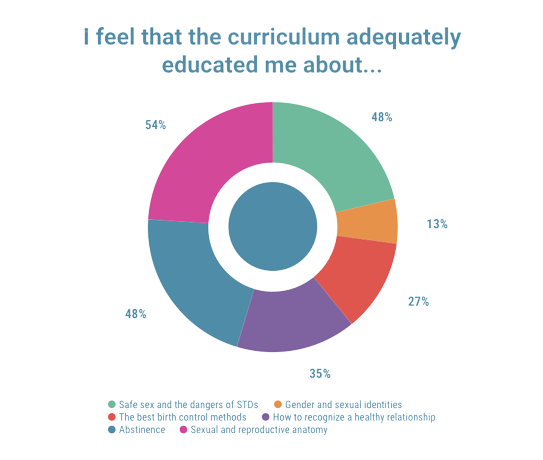“Teen Talk” updates district curriculum
Parents
Conejo Valley Unified School District’s health curriculum, “Teen Talk” from the California Healthy Youth Act, has become a hot topic at CVUSD school board meetings amongst parents since its adoption. Many have spoken out at these meetings, revealing their strong approval or disapproval of this controversial issue. Parents on opposite sides of the spectrum avow their definitive opinions, leaving onlookers wondering how long it will take for the controversy to resolve.
Cameo Carolan, a mom and teacher at Newbury Park High School, has two daughters in the CVUSD district and is actively involved in reviewing the health curriculum that her children are viewing. “I watch and read the material CVUSD sends to us before the students have their lesson,” Carolan said. After assessing the lessons, Carolan trusts that the curriculum that is taught is necessary and appropriate. “Sex education is health education,” Carolan said.
Nevertheless, Carolan does find fault in the current health curriculum and hopes that it can be updated to match state standards. “Since there is a way for families to opt out of specific health curriculum, I would like to see our district become in full compliance. I believe we are holding back some material due to community response,” Carolan said.
However, many parents in the community have fostered a very different opinion. Jennifer Fisher, a parent who removed her son from the district, feels that the health curriculum provided for the middle schoolers does not include enough parent involvement. “I think there’s definitely pieces to the curriculum that go beyond what many parents, you know, find acceptable, I guess, at certain age ranges,” Fisher said.
Fisher believes that there is a lack of transparency from the district when it comes to the range of topics discussed in health class. “I’m not against the basic ground [of health education], but I do know that there are other pieces where the kids can dive deeper and go into QR codes,” Fisher said. “Looking at different websites and things and I think it just takes it beyond the scope and sequence for their age.” Fisher claims that “The Teen Talk” health curriculum includes QR codes that are on the slides of health lessons, which students can scan to explore concepts further.
As a solution, Fisher asks that the district release all of the material that is shown to kids during their health lessons, to the public. “I think that that gives parents, you know, peace of mind knowing what their child is seeing…. I think that’s where parents get upset because they realize that there’s more to it,” Fisher said.
The Prowler staff read all of the The Teen Talk health curriculum provided by the district and did not find any QR codes. The district does include a Q and A that says in Q4:
“The page with QR Codes in “Health Connected – Teen Talk” will NOT be provided to students. However, the California Healthy Youth Act (CHYA) does require that schools provide resources to students that are participating in comprehensive sexual health & HIV/AIDS instruction. CVUSD has created its own bank of resources – CVUSD Community Resource List (for students in grade 7 & grade 9)- to be in compliance with CHYA, this resource list is available now for parents/guardians to preview prior to any comprehensive sexual health & HIV/AIDS instruction.”
Carrie Burgert, mother of two daughters in the CVUSD district, has read through each chapter of the “Teen Talk” health curriculum thoroughly. Burgert feels as though the current health curriculum is too lengthy and covers some inappropriate material. “I think that some of the current health curriculum is okay. I think some of it is not appropriate for middle school. I think that other things I don’t like are being a little bit excessive as far as how many days it’s put into the classroom,” Burgert said.
Bergert is not against the idea of sexual education but believes there are certain topics that should not be taught to elementary and middle school aged children. “I think it’s fine for fifth graders to have a basic understanding and knowledge of anatomy and what’s going on with their bodies. I think that as you get into middle school, and high school, obviously, the content can expand from there, but I think there’s certain concepts that aren’t appropriate for schools to cover, and that should be left at home,” Burgert said.
As a solution, Burgert hopes that the district will adopt a completely new curriculum, Positive Prevention Plus. I think that that was a much more age appropriate content material that satisfied all the California legal requirements,” Burgert said. Burgert also claims that the Positive Prevention Plus was the choice of teachers in the district.
As of now, “Teen Talk” is here to stay, but the current state of affairs promises that the discussion over how to handle the health curriculum in our district is here to stay. Carolan and many other parents want to leave the curriculum in the hands of health teachers who train to teach these courses, “Some health teachers at the high school and other teachers in the district have been working with kids for decades. We should trust the teachers who go through hours of professional development to teach it,” Carolan said.
The Teen Talk health curriculum link of resources is included below.
https://www.conejousd.org/cms/lib/CA50010930/Centricity/Domain/90/MS-Session-1.pdf
School Board
With the new health curriculum being put in place in 2021, called “Teen Talk,” many people from all over the district are utilizing the Public Comments section of the bimonthly school board meetings to address their concerns regarding the curriculum. They use this time primarily to voice their issues and concerns with the newer teachings that go along with the updated program.
Lisa Powell, Area 2 school board trustee, took time along with the rest of the board to evaluate which curriculum would best benefit our district. “I do know about the health curriculum because I’ve reviewed it and I’ve lived through it…I’ve looked at the process that the previous board undertook to evaluate different curricula and make a decision on which one to adopt for our district,” Powell said. She also describes the advantages to “Teen Talk” and what made it a good choice for the new curriculum. “I mean, it lays everything out…it links with all the timelines of the process they went through. You can watch all the videos that the district personnel put on for parents and throughout the process about not only Teen Talk, but the other ones that were being looked at,” Powell said.
Cindy Goldberg, Area 4 school board trustee, felt that “Teen Talk” was a good way to encourage students to have a mature conversation when discussing health and sexual topics with their parents. “I feel like the health curriculum, as it stands, gives opportunities for families to have those kinds of conversations. It always did, and parents always could opt out. That has not changed and will not change,” Goldberg said. Goldberg also addresses the reason that sexual education is necessary for students. “Public schools are for all students, right? If every student had a perfect family that taught them everything, and in a safe and respectful, medically accurate way, we might not need sex ed,” Goldberg said. “Currently that is not [however], and actually I’m not sure that that’s ever been, the case, right? So there’s not a state in the union, I don’t believe that doesn’t teach some form of comprehensive sexual health curriculum.”
One of the main concerns about “Teen Talk” is that the curriculum itself is encouraging students to have sex at a young age. Bill Gorback, Area 3 school board trustee, believes that the students, unlike the parents, feel that the curriculum is pushing them away from wanting to have sex, rather than pushing them towards it. “I will comment that the same fears that I’ve heard from the complainants…[They are] exactly the opposite of the reaction that I’ve heard [from] kids. In other words, health teachers have told me [that]…students in general hear about what happens [and] they say, ‘I don’t want to do that until I’m married’,” Gorback said.
In regards to the concerns about the health curriculum overall, Powell encourages any concerned parents to look at the district website to help them answer any questions they may have. On the district website are the different “Teen Talk” lessons. “I just would always encourage if anybody had a question or wasn’t sure about what was being taught, to go look at the district website, which is pretty comprehensive,” Powell said.
Students
In the Conejo Valley Unified School District (CVUSD), a single health class is required to graduate in high school, which can be completed online, and the middle school health curriculum is embedded in the required science classes students are already taking. There are a number of students who feel that the health course they participated in during high school has yet to make a significant impact on the well being of students.
Alexx Shaner, junior, took health online and learned more about health around her friends and family than in a health course provided in school. “The health curriculum doesn’t educate about different forms of birth control. I taught everything I know to myself because I didn’t learn enough in school,” Shaner said.
Emma Medrano, sophomore, went to Sequoia Middle School and mostly learned information regarding health outside of an actual health class. “In middle school, all I was really taught was that it’s important to take care of your health by eating healthy nutrients and exercising,” Medrano said. “There were no specific classes or videos that we watched.” Medrano felt that she learned more during the required NPHS health class. “I learned more about the reproductive system and also how certain types of relationships can have large effects on people,” Medrano said.
Cade Higham, junior, went to Los Cerritos Middle School and learned an adequate amount of information in a health curriculum during middle school. “At middle school, we learned things like what to eat and reproductive systems, but mostly what things are good for you like good foods,” Higham said. Higham learned similar information in high school as he did in middle school. “I felt like there were more details in high school when we learned about the subjects,” Higham said.
While the health curriculum that has been taught most recently does provide adequate information about the basics of sex ed, students still believe there is room for improvement. “I think it’s not teaching kids enough and it’s not modernized for today’s society,” Shaner said. “I would change how they talk about sex more so they can include LGBTQ+ content, along with straight, to be more inclusive and discuss the protection needed.”
Carson Robertson, senior, agrees that the health curriculum he learned was lacking in many areas. “Sex ed is optional which makes zero sense since it allows parents to shelter children, which leads to higher rates of sexual abuse,” Robertson said. “LGBTQ+ sex ed is completely scrubbed and oftentimes the curriculum acts as if people in those communities do not exist.”
While the curriculum does include some solutions for sexual abuse and other issues, there are other possible additions that could have an even larger impact. “The health curriculum does not provide any resources or information about sexual abuse; this is important as studies have shown that including this has a very positive impact on children reporting sexual abuse,” Robertson said.
Robertson also agrees that more in-depth lessons and information would benefit more and more students. “Study after study has shown that sex ed reduces teen pregnancy and if taught properly, can reduce the likelihood of rape as well as sexual assault,” Robertson said. “There are other effects such as women who are taught sex ed are more likely to have children [later] in life.”
Overall, the current CVUSD health curriculum has been reported to do a decent job of preparing students for very basic situations. “It [the curriculum] gave adequate information for straight people, but left everything out when it comes to LGBTQ+ issues and sex ed which is becoming increasingly important as that community grows,” Robertson said. “I also believe more information and help should be put towards learning the signs of sexual abuse and putting resources towards places that students can report it.”
While CVUSD has begun to implement changes regarding the health curriculum, there are still more steps that could be taken to improve it. “I would add much more information on LGBTQ+ sex ed, put resources and information about sexual abuse dos and dont’s and create a reporting system and make sex ed a requirement that can not be opted out of,” Robertson said.
When providing a health curriculum to middle school and high school students, it is imperative to educate students on all topics to prepare them for any number of situations. “I think sex ed is important because most kids don’t understand the dangers of STDs or being safe. It is necessary to learn about things like STDs, pregnancy, and good protection,” Shaner said.
A recent survey about the health curriculum was sent out to students in classroom and across social media and received 115 responses. The results of the survey are below.

Emerson Fuentes-Alabanza/Prowler

Emerson Fuentes-Alabanza/Prowler

Emerson Fuentes-Alabanza/Prowler



